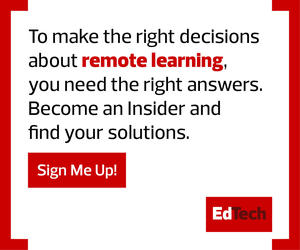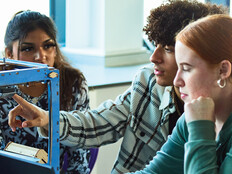What Is Media Literacy for Students?
Media literacy is the ability to understand the validity and intent behind a piece of media. The term can apply to any form of media with which students are interacting. This includes images in class lessons and projects, educational videos, texts and other resources. It applies to media outside the classroom as well, from billboards and television to social media feeds.
Often, the term media literacy is used when news literacy or information literacy would be more apt, such as when students research information and seek to identify relevant, appropriate sources. News and information literacy require that students possess a range of critical thinking skills, analysis and objectivity.
MORE ON EDTECH: These technology tools provide support in the post-pandemic classroom.
Why Is Teaching Media Literacy Important in the Digital Age?
In 2019, the Stanford History Education Group released a study — a follow-up to the research they conducted in 2016 — in which 90 percent of high school students failed four of six information literacy assessments. The researchers called the results “troubling,” and they aren’t the only observers to reach this conclusion.
Adams says his organization has discovered similar findings when testing students. “We can see that students struggled to understand exactly what distinguishes standards-based, quality journalism from other forms of information,” he says. “They also struggle with identifying what does and doesn’t count as evidence for a claim or differentiating between a high quality, reliable source and a source that is unreliable.”
As an education consultant, Frank Baker works with librarians and teachers to improve media literacy. One of the frequent concerns, he says, is “kids aren’t verifying anything. They just want the information quickly, so they put a search term in Google, and they expect Google to vet the results.”
Despite being digital natives, students need educators’ guidance to learn how to appropriately use the tools at their disposal. Other times, even after being taught how to verify information, students will choose the path of least resistance.
“For them, it’s exhausting,” says Susan Yutzey, a retired library media specialist from Ohio’s Upper Arlington City Schools. “They have all this homework to do, so looking for the most expedient way to get what they need is what they’re doing. That’s why I recommend not just a one-time media literacy course, but that librarians as the information specialists in the building work with [high school] teachers to try to integrate those lessons where the students are getting it across all four years in different disciplines.”
DISCOVER: Influencer Allie Beldin discusses continuing tech innovation in the classroom.
How Can Students Develop Better Media Literacy?
With more devices in schools, educators have more opportunities to discuss media literacy in the classroom and integrate it into lessons. Educators should work with the school librarian — an expert on research and information — to incorporate the teachings into their class.
“We need every teacher in every discipline to teach media literacy,” Baker says. “If you’re a teacher and you use pictures or video in a classroom, then you need to have a strong dose of media literacy education so that we can help young people think critically, because the evidence is clear, they are not thinking critically.”
Yutzey adds that the collaboration between librarians and educators should begin early. “It really behooves us, as librarians, to teach across all of K–12, so that what we’re doing with the young ones is showing them some of the techniques,” she says. “Then we’re not trying to do away with bad habits, which is what happens once they get into middle and high school. They’ve developed some pretty bad habits about how they evaluate media.”












